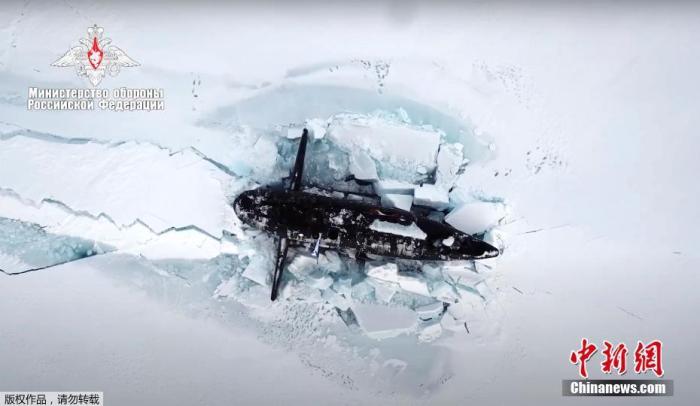China News Service, April 6, reported that climate warming has led to the continuous melting of Arctic ice. In order to protect its northern coast and open up an important transportation route from Asia to Europe, Russia is gathering unprecedented military forces and testing the latest weapons in the Arctic.
The Pentagon of the United States said that the United States pays close attention to the movements of the Russian military in the Arctic.
On March 26, local time, a photo released by the Russian Ministry of Defense showed a Russian nuclear submarine breaking through the ice in the Arctic.
According to CNN, satellite images show that Russia continues to build military bases and deploy military hardware, including bombers and radar systems, along its Arctic coast.
According to reports, Russia has also set up underground facilities in the region to store high-tech weapons.
On March 26, Russian Navy Commander Yevmenov reported to Russian President Vladimir Putin that three Russian nuclear submarines surfaced in the Arctic at the same time.
This is the first time in Russian history.
After listening to the report, Putin said that the various activities completed have proved the combat capability and combat readiness of the Russian Navy in the harsh Arctic region.
US Pentagon spokesman John Kirby said that the US is closely following Russia’s movements in the Arctic and intends to defend its national interests in the Arctic.
Kirby said at a regular press conference: "I do not intend to divulge our intelligence. Of course, we are closely monitoring the situation. Neither party wants to see the militarization of the Arctic. At the same time, we recognize that the Arctic is a key The region is extremely important for national defense. This region is a potential strategic corridor between the Indo-Pacific region, Europe and the United States, and the expansion of competition makes the region very vulnerable."
He also confirmed that at the security level, the United States is committed to protecting national interests in the Arctic region by maintaining a rule-based international order, especially through cooperation between the United States and its allies and partner countries in the Arctic region.
According to reports, the North Atlantic Treaty Organization (NATO) and the United States have deployed troops and armaments to the area.
For example, the U.S. B-1 Lancer bomber stationed at the Oran Air Force Base in Norway recently completed a flight mission in the eastern Barents Sea, one of the marginal seas of the Arctic Ocean; U.S. officials also admitted that the U.S. military was invisible in August 2020. The "Sea Wolf" submarine entered the North Pole.
A senior official of the US State Department said that “the Arctic region is clearly facing military challenges from Russia”, including Russia’s conversion of old bases from the Cold War period and the establishment of new military installations on the Kola Peninsula near Murmansk.
"This has an impact on the United States and its allies, especially because it enables Russia to project power into the North Atlantic."
Russia has always insisted that its goal in the Arctic is economically related and peaceful.

